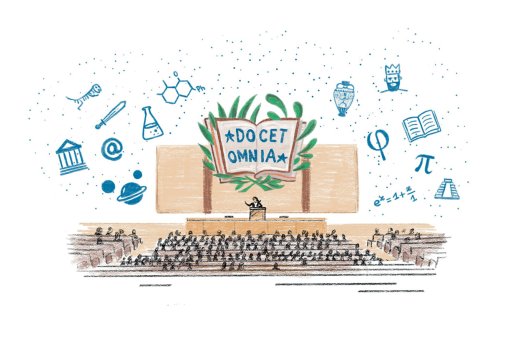Biologist Virginie Courtier-Orgogozo studies the genetic mechanisms involved in evolution, in order to better understand the origins and future of species, with an approach that is as scientific as it is philosophical. She is also working on an experimental biotechnology, genetic forcing, and assessing its short- and long-term risks.
She is a guest at the Biodiversity and Ecosystems Annual Chair, which is supported by the Jean-François and Marie-Laure de Clermont-Tonnerre Foundation.
How did your interest in the evolution of species and its underlying mechanisms originate ?
Virginie Courtier-Orgogozo : I've always had a desire to understand the living world. At the age of fifteen , I borrowed a microscope from my SVT teacher for the summer vacations and marveled at the microorganisms. Naturally, this led me down the path of research. During my thesis, I studied the molecular and cellular mechanisms by which complex organisms develop from a single cell. Then I became interested in evolution and, after my thesis, I chose to use the genetic approach to try and better understand the mutations that appear and are responsible for changes in character traits. I wanted to see if we could refine evolutionary theory to include these genes and mutations. In the years 2000, some genomes were already known. Then genomics techniques developed, for example with high-throughput sequencing, leading to an explosion of discoveries about genes and mutations. We already knew that evolution often repeats itself in different parts of the world. In snowy environments, for example, different species have white coats. By studying genomes, it became clear that this convergence of traits was often the result of mutations in the same genes, which appeared independently in different species or populations. Evolution not only repeats itself at the trait level, but also follows a limited number of genetic pathways. This means that, within a genome, there are not as many possibilities as one might imagine for evolving towards a given form. A whole area of evolution, once thought to be highly random, is in fact quite repetitive.
If evolution follows a limited number of " genetic paths ", does this imply, as the English evolutionist Simon Conway Morris suggested, that even with different initial conditions, evolution would follow a similar path ?
When I began my research, I was rather close to the ideas of the American paleontologist Stephen Jay Gould, who believed, on the contrary, that evolution involves many unpredictable random phenomena and that the human species is a pure product of chance. For him, nothing predisposed human ancestors to success. Other groups of species could very well have acquired a dominant position on Earth, in our place. He was interested in the Burgess fauna, and in particular in the small fossils of Pikaia gracilens, precursors of eel-like vertebrates, which had nothing in particular to differentiate them from other animals of their time. Interestingly, Simon Conway Morris, a renowned English paleontologist, studied the same fossils as Gould and came to a diametrically opposed conclusion. The evolution of life is a process that has occurred only once on Earth. One wonders whether, under other conditions, it would have produced the same thing. It's an interesting thought experiment, but fundamentally, we don't know. For Morris, on other planets, if the conditions are right for life to evolve, we'll find trees that form green forests just as we do here. In fact, to capture light energy, there will be competition between living beings. So, the tallest will dominate and form trunks. Leaves will also be present, as they maximize the surface area available for absorbing light. And they'll be green, because that's the color of the molecule best able to capture this light energy : chlorophyll... Asking whether evolution would follow a similar path, if we were to restart it with slightly different initial conditions, is above all a philosophical question, but it's also a question with practical aspects : to search for and detect other forms of life in our universe, we need to imagine what life might look like elsewhere.













